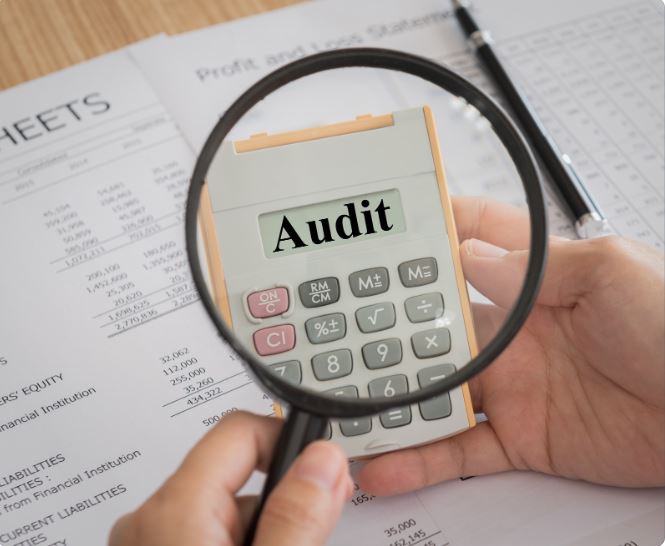Last Updated on
Breaking Down the Intricacies of Backlink Auditing
In its simplest form, backlink Auditing is a vital ingredient of the World Wide Web – a reference akin to a citation. Each backlink is a vote of trust, asserting that a webpage possesses valuable content worth sharing. Embrace this reality: understanding the universe of backlinks is paramount to any SEO strategy.
The realm of backlinks unfolds within a complex web, extending beyond sheer quantity. Factors like relevance, authority, and quality leap into the picture, coloring the portrait of the backlink profile. In a digital landscape laden with competition, mastering the art and science of backlinks has never been more vital.

The Indispensable Role of Backlink Audits
A backlink audit is a comprehensive examination of your site’s backlink profile, an integral part of any SEO strategy. Think of this process as your site’s health checkup, revealing strengths to capitalize on and weaknesses to rectify.
Backlink audits aren’t just about identifying the harmful links you must discard. It’s about discovering your backlinks’ qualitative and quantitative aspects and formulating a roadmap for future link-building.
Embarking on the Backlink Audit Journey: The Essential Steps
Performing a backlink audit demands methodical steps that require keen attention to detail.
Step 1: Gathering Your Backlinks
Collecting your backlinks is the primary step in this audit voyage. Utilize powerful tools like SEMRush, Ahrefs, or Google Search Console to amass all backlinks pointing to your site. This phase unveils the magnitude and nature of your backlink landscape.
Step 2: Categorizing and Evaluating Backlinks
Once your backlinks are gathered, segregate them based on metrics such as Domain Authority, Page Authority, and relevance. The evaluation process allows you to discern the quality of your links, the referring sites’ authenticity, and the anchor text’s relevance.
Step 3: Identifying Potentially Harmful Backlinks
Some backlinks are more of a liability than an asset. Unnatural, low-quality, or spammy links pose a risk to your site’s reputation and ranking. Discerning these malicious links is the crucial role of a backlink audit.
Step 4: Disavowing Detrimental Backlinks
When you’ve identified the toxic backlinks, it’s time to sever ties with them. The Google Disavow tool empowers you to disown these unhelpful connections. Parting ways with low-quality links is a step towards better SEO health.
Delving Deeper: Backlink Audit Advanced Strategies
A backlink audit is not merely a functional exercise; it’s an intricate expedition, unveiling deeper SEO insights.
Nurturing Backlink Relationships
Assess the value of each backlink, and appreciate those contributing to your SEO. Consider contacting sites linking to you positively, cultivating beneficial relationships for future collaborations.
Competitor Backlink Analysis
Understanding your competitors’ backlink profiles can unearth insights into their SEO strategies. This reconnaissance mission offers valuable leads for potential sites to target for link building.
Backlink Refresh and Revival
Old, broken links in your profile can be revamped to boost your site’s SEO. Reach out to the referring sites, suggest updating their connections, and your lost SEO juice is restored.
Conclusion: The Power of a Backlink Audit
A robust backlink audit is a linchpin for successful SEO. Navigating the labyrinth of backlinks might be demanding, yet it’s immeasurably rewarding. It’s a voyage of discovery, unveiling invaluable insights and strategies to elevate your site’s SEO.
Remember, backlink audits are not a one-time activity. They are integral to your ongoing SEO strategy, requiring consistent attention and care. A routine backlink audit defends your site against penalties and forges a path to SEO triumph. Embrace this powerful tool, and transform your SEO journey from a game of chance to a mastery strategy.
FAQs
What is backlink analysis?
Backlink analysis refers to evaluating and examining the backlinks that point to a particular website or webpage. Backlinks are links from external websites that direct users to your website. Backlink analysis involves assessing the quality, quantity, and relevance of these backlinks to gain insights into the link profile and overall SEO performance of a website. Here are some critical aspects of backlink analysis:
- Backlink Quality Assessment: Backlink analysis involves assessing the quality of the backlinks pointing to a website. This includes examining linking websites’ domain authority, page authority, and trustworthiness. High-quality backlinks from authoritative and relevant websites tend to have a positive impact on search engine rankings.
- Link Profile Evaluation: Backlink analysis helps understand a website’s overall link profile. It involves analyzing the diversity of referring domains, anchor text distribution, and the overall link growth pattern. A healthy and diverse link profile is generally preferred over a profile dominated by low-quality or spammy links.
- Competitor Comparison: Backlink analysis often includes comparing the backlink profiles of competitors. This can help identify link-building opportunities, discover new linking sources, and gain insights into successful strategies employed by competitors in acquiring backlinks.
- Identifying Link-Building Opportunities: You can identify potential sources for acquiring new backlinks by examining backlinks. This can involve finding websites linked to similar content or competitors but not yet linked to your website. It helps in creating targeted outreach strategies to acquire new high-quality backlinks.
- Penalty and Risk Assessment: Backlink analysis can uncover potentially harmful or low-quality backlinks that might negatively impact a website’s SEO performance. By identifying and disavowing these dangerous links, you can mitigate the risk of penalties from search engines and improve the overall quality of the link profile.
Backlink analysis is an essential component of SEO. It provides valuable insights into a website’s backlink profile, helps understand its online authority, and guides the development of effective link-building strategies to enhance search engine visibility and rankings.
How often should you do a backlink audit?
The frequency of conducting a backlink audit can vary depending on factors such as the size of your website, the competitiveness of your industry, and the frequency of your link-building activities. Here are some general guidelines to consider when determining how often to perform a backlink audit:
- Initial Audit: Conducting a comprehensive backlink audit when starting a new website or taking over an existing website is recommended. This initial audit helps establish a baseline of your website’s link profile and identifies any potential issues or spammy backlinks that need to be addressed.
- Regular Monitoring: Conducting a backlink audit at least once every six months is a good practice for most websites. Regular monitoring helps ensure that your link profile remains healthy, identifies any changes or issues, and allows you to address them promptly.
- After Major Changes: If you make significant changes to your website, such as restructuring the site, migrating to a new domain, or implementing new SEO strategies, it’s a good idea to perform a backlink audit afterward. This will help you assess the impact of these changes on your backlink profile and ensure everything is functioning correctly.
- Link-Building Activities: If you actively engage in link-building campaigns or acquire many new backlinks, it’s beneficial to periodically conduct backlink audits to assess the quality and relevance of these new links. This will help you identify potential issues or risks associated with the acquired backlinks.
- Penalty or Ranking Drops: If you notice a sudden drop in search engine rankings or suspect a sentence, conducting a backlink audit is essential to identify any potentially harmful or unnatural backlinks that may be causing the issue. Removing or disavowing these dangerous links can help address the problem and improve your website’s performance.
Remember, the frequency of backlink audits can be adjusted based on the specific needs of your website. Suppose you actively monitor your link profile, keep track of your link-building efforts, and stay vigilant about any potential issues. In that case, you can determine the timing for your backlink audits.




